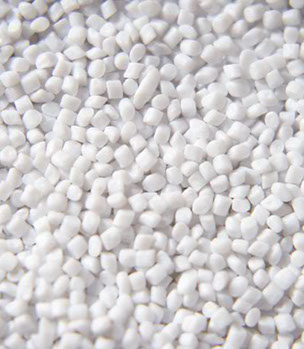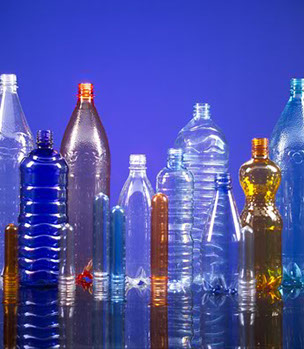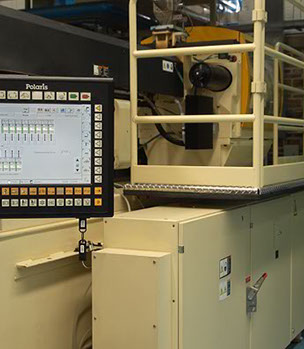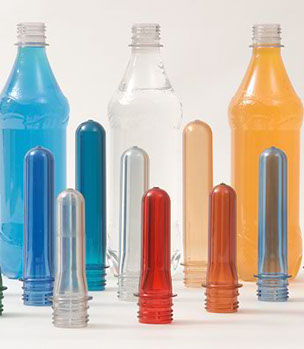

The preforms are essentially PET in the amorphous state. The PET in this state undergoes an aging process that makes it more fragile in time, this phenomenon is called free volume relaxation and it has been proven that the moisture accelerates it. Aged fragile preforms can easily fracture from the thread to the support ring.
The best practice to prevent problems caused by aging is the rotation of PEPS-type inventories (the first thing that is received is the first thing that is processed). But as a general rule do not store the preform for more than 6 months, under optimum storage conditions. In areas of humidity and extreme temperatures, a maximum of 2 months is suggested.
The preforms over time absorb a significant amount of moisture from the environment, moisture causes that at the time of heating, the distribution of temperature throughout the body of the preform is not uniform, causing its natural stretch ratio to change, even when this does not damage the preform, therefore it changes its processing conditions. This explains why the old preforms, produce bottles with different distribution to the recent preforms. If preforms of different ages are mixed and subjected to the blowing process, the operator must continually compensate for the effect of moisture; this makes the process impossible to control.
In order to follow the PEPS inventory policy, the storer must be trained in stacking the preform boxes in a pre-established order following the label information and no more than three levels of stowage, as over 900 kg. the box yields, supporting the entire weight of the preform, causing severe deformations mainly in the crown.
The preform boxes must be transferred to the molding room in a consensual way, this allows the conditioning to the temperature of the process zone, which guarantees that all the preforms enter the oven at the same initial temperature, otherwise its blowing temperature will be different as well as its distribution of thicknesses.
Storage temperature should not exceed 38 ° centigrade. Transportation of the preform should be carried out in covered vehicles and in conditions lacking humidity, these must be free of agents that can contaminate the preform, (without odor or volatile particles), besides not having perforations in the trailer boxes, which may generate moisture or which may contaminate the packaging at the time of shipment.
Exposure of the preform to solar rays, can increase the temperature of the same, causing deformation or acceleration of aging, creating unsafe conditions in the blowing process, it is not recommended to expose the boxes of preforms to the weather.
1
2



1
2
3
Before placing the preforms in the blower orienter the information contained in the box label must be transferred along with the date and time of blowing, to the blower machine log. The operator of the blower is in charge of checking the type of preform, weight, resin, color, etc. And in that case a change of resin occurs, you will know what changes to make in the process.
This also helps the correct production follow-up, if for example a batch of bottles is detected to be defective, the information collected can help to determine easily when the preforms were made, what molding conditions were applied, etc.
The heating and blowing of the preform varies according to the design of the bottle, as well as the grammage of the preform to be used, the conditions marked here are of a general profile, and serve to establish an operation parameter according to the utilization of our preform.

1
2

Finished Product
Pet bottles are regularly stored in layers on wooden pallets, the amorphous areas of the PET bottle become brittle as time goes by, this phenomenon is called volume relaxation and moisture accelerates it.
The problems associated with aging are rupture of the container during filling, low resistance to falling and stress cracking. The storage time of the bottles should not exceed 3 weeks and in hot and humid climates should minimize the time.
High storage temperatures allow greater shrinkage of the bottles. If conditions are severe, this may cause distortion of the container. The degree of distortion or shrinkage will depend on storage and transport conditions, bottle design and aging conditions.
As bottles shrink faster during the first three days after blowing, a consistent storage time will help maintain consistent volume and dimensions. In the case of applications sensitive to acetaldehyde, storing the empty bottles for two weeks may be beneficial.
1
2
storage and processing
CHEMICAL RESISTANCE
process
PERMEABILITY




PRODUCT TECHNICAL SHEET
Antiguo Camino a Tesistán 680 | Zapopan, Jalisco, México | Tel. (011 52 33) 3633-7679, 3633-7690 | email: info@polykon.com.mx
All rights reserved © 2017. Polykon Envases.
